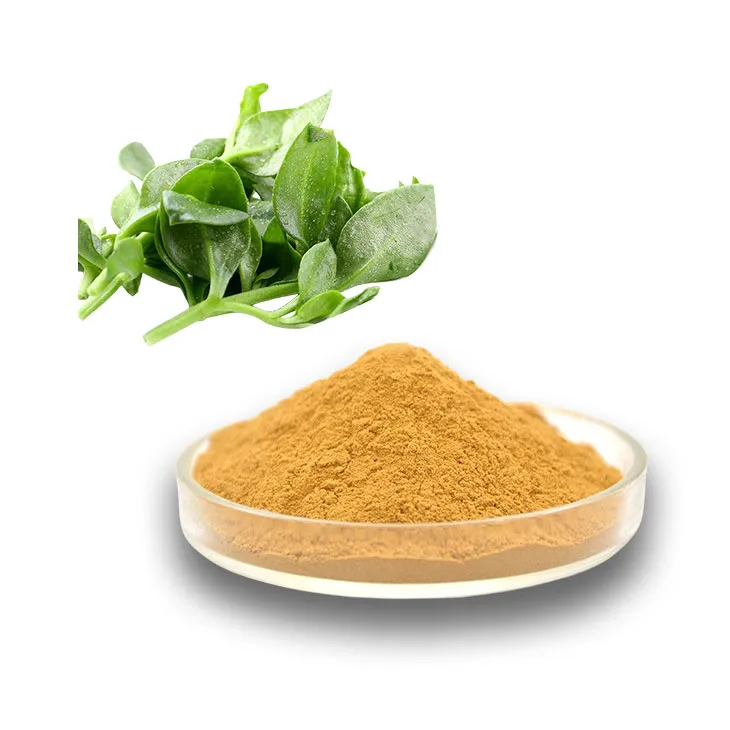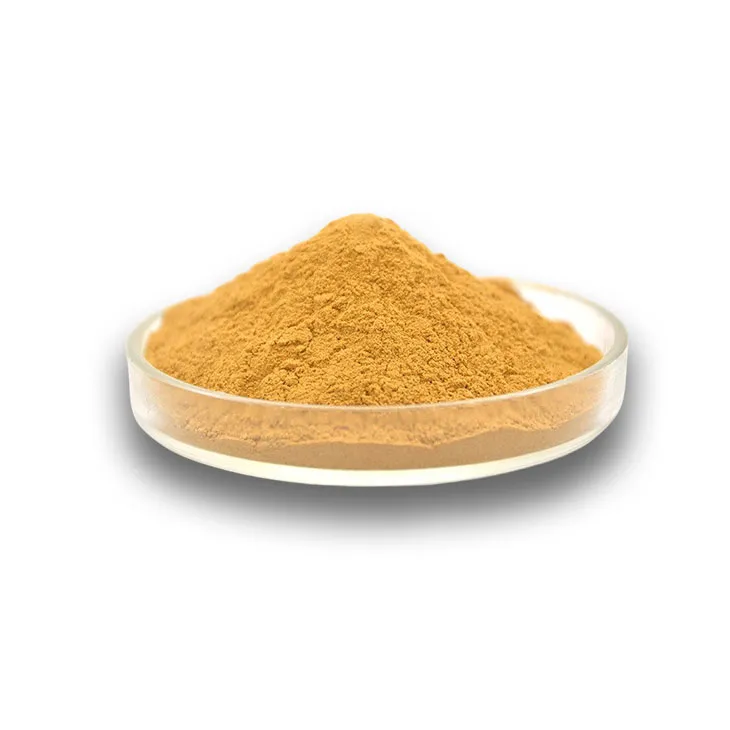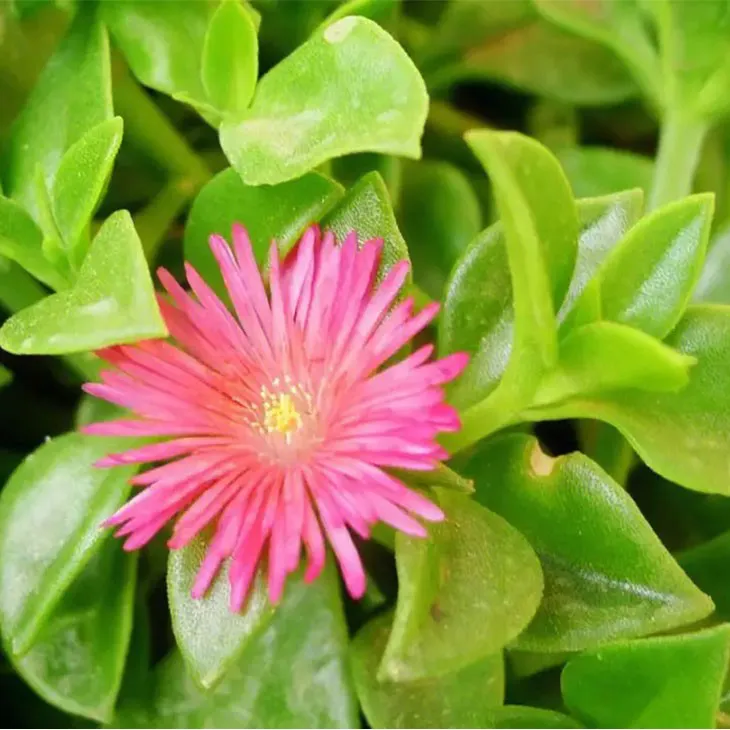- 0086-571-85302990
- sales@greenskybio.com
Extraction process of Andrographis paniculata extract powder.
2024-11-26

1. Introduction
Andrographis paniculata is a remarkable medicinal plant that has been used in traditional medicine systems for centuries. The extraction of its active compounds into a powder form is of great significance as it enables its application in various industries such as pharmaceuticals, food, and cosmetics. This article will delve into the detailed extraction process of Andrographis Paniculata Extract Powder.

2. Raw Material Selection
The first and crucial step in the extraction process is the selection of raw materials. High - quality Andrographis paniculata is essential for obtaining a good - quality extract powder.
2.1 Quality Criteria
- The plants should be of the correct species, Andrographis paniculata, and free from any misidentification. - They should be in a fresh state. Freshly harvested plants generally contain a higher amount of bioactive compounds compared to those that have been stored for a long time. - The plants should be free from any signs of disease or pest infestation. Diseased or infested plants may have altered chemical compositions and can introduce contaminants into the extract.

3. Pretreatment of Raw Materials
Once the raw materials are selected, they need to undergo pretreatment before the actual extraction process.
3.1 Cleaning
Cleaning is an important step to remove any impurities such as dirt, sand, and other foreign materials. This can be done by gently washing the plant materials with clean water. However, it is important to note that excessive washing should be avoided as it may lead to the loss of some water - soluble bioactive compounds.
3.2 Drying
After cleaning, the plant materials need to be dried. Drying reduces the moisture content of the plants to a suitable level. There are different methods of drying that can be employed: - Sun Drying: This is a traditional and cost - effective method. The plant materials are spread out in a well - ventilated area under the sun. However, it has some limitations such as slow drying speed and the risk of contamination from environmental factors like dust and insects. - Oven Drying: Using an oven allows for more precise control of temperature and drying time. A suitable temperature, usually between 40 - 60°C, is set to dry the plant materials without causing thermal degradation of the bioactive compounds.

4. Extraction Methods
After the pretreatment of the raw materials, the extraction of bioactive compounds from Andrographis paniculata can be carried out using various methods. One of the most commonly used methods is solvent extraction.
4.1 Solvent Extraction
Solvent extraction involves the use of a solvent to dissolve and extract the desired bioactive compounds from the plant materials. - Ethanol as a Solvent: Ethanol is a popular solvent for extracting compounds from Andrographis paniculata. It has several advantages: - It can dissolve a wide range of bioactive compounds, including flavonoids, diterpenoids, and alkaloids, which are present in Andrographis paniculata. - Ethanol is relatively safe to use compared to some other solvents, and it is also easily available. - The extraction process using ethanol needs to be carefully controlled. The ratio of ethanol to plant material, the temperature, and the extraction time all play important roles in determining the extraction efficiency. For example, a common ratio of ethanol to plant material could be 5:1 (volume/weight). The extraction temperature could be set at around 50 - 60°C, and the extraction time may range from 2 - 6 hours, depending on the specific requirements. - Water as a Solvent: Water can also be used as a solvent for extraction. - It is a natural and environmentally friendly solvent. Water - soluble compounds such as some polysaccharides and phenolic acids can be effectively extracted using water. - However, water extraction may also extract more impurities compared to ethanol extraction. The extraction conditions for water extraction also need to be optimized. For instance, the water temperature can be set at around 80 - 100°C for a certain period, usually 1 - 3 hours.
4.2 Other Extraction Methods
- Supercritical Fluid Extraction: This is a relatively advanced extraction method. Supercritical carbon dioxide (CO₂) is often used as the supercritical fluid. It has the advantage of being non - toxic, non - flammable, and having a relatively low critical temperature and pressure. It can selectively extract certain bioactive compounds from Andrographis paniculata with high efficiency. However, the equipment for supercritical fluid extraction is more expensive compared to solvent extraction methods. - Microwave - Assisted Extraction: In this method, microwave energy is used to enhance the extraction process. Microwave - assisted extraction can significantly reduce the extraction time compared to traditional solvent extraction methods. The microwaves cause the plant cells to rupture more easily, facilitating the release of bioactive compounds into the solvent. However, proper control of microwave power and extraction time is crucial to avoid over - extraction or degradation of the compounds.

5. Optimization of Extraction Parameters
To obtain a high - quality Andrographis Paniculata Extract Powder, it is necessary to optimize the extraction parameters.
5.1 Temperature
The extraction temperature has a significant impact on the extraction efficiency. If the temperature is too low, the solubility of the bioactive compounds in the solvent may be low, resulting in a low extraction yield. On the other hand, if the temperature is too high, it may cause thermal degradation of the compounds. For example, when using ethanol as a solvent, a temperature range of 50 - 60°C is often considered optimal for extracting most of the bioactive compounds from Andrographis paniculata while minimizing the risk of degradation.
5.2 Time
The extraction time also needs to be carefully controlled. Longer extraction times do not always result in higher extraction yields. After a certain period, the extraction may reach equilibrium, and further extraction may lead to the extraction of unwanted impurities or the degradation of the desired compounds. For solvent extraction methods, the extraction time can range from a few hours to several hours depending on the solvent and the plant material used.
5.3 Solvent - to - Material Ratio
The ratio of solvent to plant material is another important parameter. A higher solvent - to - material ratio may increase the extraction yield, but it also increases the cost of the extraction process. Finding the optimal ratio is crucial for economic and efficient extraction. For example, as mentioned earlier, an ethanol - to - plant material ratio of 5:1 (volume/weight) may be a suitable starting point for extraction, but this may need to be adjusted based on the specific characteristics of the plant material and the desired extraction efficiency.
6. Post - extraction Processing
After the extraction process, the obtained extract needs to be further processed into a powder form.
6.1 Evaporation
The first step in post - extraction processing is usually evaporation. The purpose of evaporation is to remove the solvent from the extract. For example, if ethanol was used as the solvent, the extract - ethanol mixture is heated gently under reduced pressure. This allows the ethanol to evaporate, leaving behind a concentrated extract. The evaporation process needs to be carefully controlled to avoid over - heating and potential degradation of the bioactive compounds.
6.2 Drying
After evaporation, the concentrated extract is further dried to obtain a powder form. There are different drying methods that can be used: - Spray Drying: This is a commonly used method in the production of extract powders. In spray drying, the concentrated extract is sprayed into a hot air stream. The hot air quickly dries the droplets of the extract, forming a fine powder. Spray drying has the advantage of producing a powder with good flowability and a relatively uniform particle size. - Freeze - Drying: Freeze - drying, also known as lyophilization, involves freezing the concentrated extract first and then removing the water (or other solvents in case of non - aqueous solvents) by sublimation under reduced pressure. Freeze - dried powders often have better preservation of the bioactive compounds as the drying process is carried out at a low temperature. However, freeze - drying is a more expensive process compared to spray drying.
7. Conclusion
The extraction process of Andrographis Paniculata Extract Powder is a multi - step and complex procedure. Each step, from raw material selection to post - extraction processing, plays a crucial role in obtaining a high - quality extract powder. By carefully controlling the various parameters such as extraction methods, temperature, time, and solvent - to - material ratio, it is possible to produce Andrographis paniculata extract powder with high bioactivity and purity, which can then be widely used in the pharmaceutical, food, and cosmetic industries.
FAQ:
What are the key factors in the pre - treatment process of Andrographis paniculata for extract powder extraction?
The key factors in the pre - treatment process include carefully selecting high - quality and fresh raw materials. Then, cleaning is important to remove impurities, and drying to an appropriate moisture content is also necessary.
Why are different solvents used in the extraction of Andrographis paniculata extract powder?
Different solvents such as ethanol or water are used depending on the target compounds. Each solvent has different solubility properties, and by choosing the appropriate solvent, it is possible to extract specific bioactive compounds more effectively.
How can the extraction yield of active ingredients be maximized during the extraction of Andrographis paniculata extract powder?
To maximize the extraction yield, the extraction process needs to be precisely controlled in terms of temperature, time and solvent - to - material ratio. Optimal values for these parameters can ensure that the maximum amount of desired active ingredients is extracted.
What techniques are used to convert the Andrographis paniculata extract into powder form?
Techniques like evaporation and drying are used to convert the obtained extract into powder form. These processes remove the solvent and moisture, leaving behind a dry powder that is more convenient for use in various industries.
What are the applications of Andrographis paniculata extract powder in the pharmaceutical, food and cosmetic industries?
In the pharmaceutical industry, it may be used for its medicinal properties. In the food industry, it could potentially be used as a functional ingredient. In the cosmetic industry, it may be utilized for its antioxidant or other beneficial properties, but specific applications depend on further research and development in each industry.
Related literature
- Extraction and Characterization of Bioactive Compounds from Andrographis paniculata"
- "Optimization of Andrographis paniculata Extract Production for Pharmaceutical Applications"
- "The Role of Andrographis paniculata Extract in the Food and Cosmetic Sectors"
- ▶ Hesperidin
- ▶ citrus bioflavonoids
- ▶ plant extract
- ▶ lycopene
- ▶ Diosmin
- ▶ Grape seed extract
- ▶ Sea buckthorn Juice Powder
- ▶ Beetroot powder
- ▶ Hops Extract
- ▶ Artichoke Extract
- ▶ Reishi mushroom extract
- ▶ Astaxanthin
- ▶ Green Tea Extract
- ▶ Curcumin Extract
- ▶ Horse Chestnut Extract
- ▶ Other Problems
- ▶ Boswellia Serrata Extract
- ▶ Resveratrol Extract
- ▶ Marigold Extract
- ▶ Grape Leaf Extract
- ▶ blog3
- ▶ blog4
-
Chinese Withania somnifera Extract Factory.
2024-11-26
-
中国松树皮提取物粉粉末供应商
2024-11-26
-
High - quality Marigold Extract Products.
2024-11-26
-
100% Pure Natural Mango - Flavored Powder.
2024-11-26
-
Lycopene
2024-11-26
-
Kelp Extract Powder
2024-11-26
-
Uridine-5'-monophosphate Disodium salt
2024-11-26
-
American Ginseng Root Extract
2024-11-26
-
Black Rice Extract
2024-11-26
-
Licorice Root Extract Powder
2024-11-26
-
Ginseng Root Extract
2024-11-26
-
Lemon Extract
2024-11-26
-
Sea buckthorn oil
2024-11-26
-
Kidney Bean Extract
2024-11-26





















